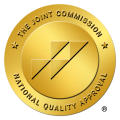Signs of High Functioning Anxiety in Your Staff
An overview of the signs and symptoms of high-functioning anxiety, which some people tend to struggle with it, and how to treat it.
What is Anxiety?
Many of us struggle with anxiety or know someone who does—according to the National Institute of Mental Health, nearly 40 million Americans deal with an anxiety disorder at any given time.1 Anxiety looks different for each person who deals with it, but most anxiety is characterized by intense stress and unwarranted worry over situations or events. Anxiety can happen over present circumstances, or things that have happened in the past, but oftentimes anxiety manifests as worry about future events. Some of the different types of anxiety include:
- General anxiety disorder (GAD)
- Obsessive-compulsive disorder (OCD)
- Panic disorder
- Post-traumatic stress disorder (PTSD)
- Social phobia or social anxiety disorder
The symptoms of anxiety vary from person to person, but a racing heartbeat, sweating, shaking, rapid breathing, and GI problems are common physical manifestations. The emotional and mental symptoms of anxiety include but are not limited to, nervousness, tenseness, trouble thinking and concentrating on things other than the anxiety, and having a sense of impending doom or danger.2
To be diagnosed with anxiety, one must meet specific criteria laid out in the Diagnostic & Statistical Manual of Mental Disorders (DSM) such as restlessness, muscle tension, or irritability, and they worry more days than not for at least six months.
What Is High Functioning Anxiety?
High functioning anxiety is another type of anxiety that affects many people. Though it is not a recognized medical diagnosis, it is a type of anxiety that accurately describes how people hide their anxiety symptoms by appearing to be functioning normally or even exceptionally. People who have this sort of anxiety are often viewed as successful, calm, hard-working people that go above and beyond; on the inside, however, they experience significant stress.
About 18% of the 40 million Americans dealing with anxiety identify themselves as having high functioning anxiety.3
Diagnosing High Functioning Anxiety
Since high functioning anxiety is not a recognized medical diagnosis, it is largely a self-diagnosed condition. However, those who have been diagnosed with a generalized anxiety disorder may be more prone to high functioning anxiety. Additionally, someone who has not been diagnosed with an anxiety disorder, but finds themselves constantly worrying and pushing themselves to their limits to try to avoid triggering negative feelings, may be more likely to have high functioning anxiety.4High Functioning Anxiety Symptoms

The signs of high functioning anxiety can appear like the symptoms of other types of anxiety. These common symptoms include worry, nervousness, trembling, GI problems, and sleep problems. However, high functioning anxiety also comes with its own set of symptoms, including:
- A desire to stay busy at all times
- An inability to relax
- A need for perfectionism
- Overthinking, ruminating, or overanalyzing
- Fear of failure
These symptoms are commonly seen in students and other people under pressure to succeed. The stress that comes with college—maintaining good grades, creating a social circle, working, adjusting to new ways of living—can easily bring about high functioning anxiety. Students may feel overwhelmed by the demands of school but must push down their anxiety symptoms to succeed, beginning the high-functioning anxiety cycle.
High Functioning Anxiety in the Workplace
Recognizing it in the workplace may be more difficult than spotting other types of anxiety, because those who struggle with it may hide their symptoms well. Since high achievers and perfectionists often suffer from high functioning anxiety, many people may not be able to see the signs of it lurking within the hardworking, successful employee. However, workers who seem on edge, nervous, or who consistently work long hours and take on heavy workloads may be dealing with this disorder. Employers may unintentionally contribute to workers’ anxiety by commending their success and dedication to their work. What they may not understand is that this can encourage employees to continue perfectionistic tendencies and other high functioning anxiety symptoms.
High functioning anxiety may even overlap with work anxiety, which is what it sounds like—anxiety around work, whether it is workload, coworkers, performance, or a combination of things. Work anxiety can manifest differently than high-functioning anxiety. Those with work anxiety may struggle to concentrate and stay positive at work and may not efficiently meet deadlines. Work anxiety combined with high functioning anxiety can lead to an inconsistent and unpredictable staff that may not be able to handle the challenges of certain jobs.
High Functioning Anxiety and Addiction
Left untreated, people experiencing high functioning anxiety may end up with additional conditions that impact their health and wellbeing. People with anxiety are two to three times more likely to have substance abuse disorder compared to those without anxiety.5 Substances may temporarily allow anxious people to feel happy and relaxed, but they do not provide long-term relief. In fact, substance abuse can lead to more anxiety. Studies indicate the presence of an anxiety disorder or substance use disorder is a risk factor for the other disorder.6
Since people with anxiety are at a higher risk for addiction, it is critical to know how to spot the signs of anxiety and the signs of addiction. Someone experiencing addiction may experience obsessive thoughts and actions, a loss of control around substances, and may deny they have a problem. Some of the physical symptoms of addiction include:
- Enlarged or small pupils
- Slurred speech
- Bloodshot eyes
- Sleep issues
- Poor physical coordination
- Unkempt appearance
Treating High Functioning Anxiety
There are many options available for people experiencing the dual diagnosis of anxiety and substance abuse disorder. The first step in treatment is typically detox from substances, either through outpatient treatment or at a rehabilitation center. However, treating a substance abuse disorder will not eliminate an anxiety disorder or vice versa, so the patient must receive extensive care to manage both conditions. Anxiety symptoms can be managed with various medications, and many individuals also find therapy helpful in decreasing anxiety and managing substance abuse.
Resources
https://uniquemindcare.com/the-characteristics-of-high-functioning-anxiety/
https://www.mayoclinic.org/diseases conditions/anxiety/symptoms-causes/syc-20350961
https://uniquemindcare.com/the-characteristics-of-high-functioning-anxiety/
https://uniquemindcare.com/the-characteristics-of-high-functioning-anxiety/
https://adaa.org/understanding-anxiety/co-occurring-disorders/substance-abuse




